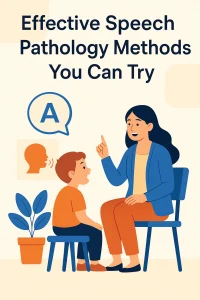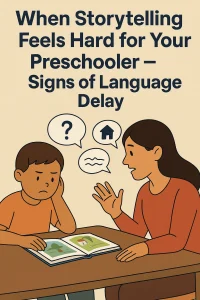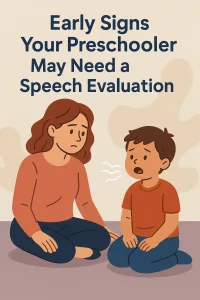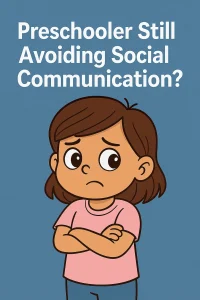Best Speech Therapy Exercises for Stroke Survivors
By Rajini D
Last Updated: February 1, 2024
Stroke can profoundly impact communication, transforming simple conversations into challenging tasks. Speech therapy offers hope, helping survivors rebuild their communication skills and reconnect with their loved ones. This article explores effective speech therapy exercises tailored for stroke recovery, designed to improve speech clarity and cognitive engagement. Through practical advice and supportive guidance, we’ll help you navigate the path to regaining a clear voice.
Understanding Stroke and Its Effects on Speech
A stroke occurs when the blood supply to part of the brain is interrupted or reduced, preventing brain tissue from getting oxygen and nutrients. This damage can have a significant impact on various functions, including the ability to speak, which is often taken for granted until suddenly compromised.
Aphasia, Dysarthria, and Apraxia are common speech disorders that may arise after a stroke:
Apraxia of speech is characterized by trouble saying what one wants correctly and consistently. This disorder isn’t due to weakness but rather difficulty in the brain’s ability to send the proper signals to move the lips, jaw, and tongue. It can be especially challenging because it makes tasks that require precise movements, like talking, very difficult.
Aphasia is the loss or impairment of the ability to use or understand language. It can manifest as difficulty in finding the right words, forming coherent sentences, or understanding others’ speech. For a parent, this might mean their child struggles to communicate basic needs or emotions effectively.
Dysarthria occurs when the muscles you use for speech are weak or you have difficulty controlling them. This leads to slurred or slow speech that can be difficult to understand. For therapists providing online therapy, identifying exercises that strengthen these muscles can be crucial for recovery.
Role of Speech Therapy in Stroke Recovery
Think of your brain like a network of roads. When a stroke occurs, it’s as if a major roadblock suddenly appears, cutting off access to key areas, including communication. This is where speech therapy steps in, acting like a detour sign that helps you find new ways to express yourself. The science behind this is called neuroplasticity—the brain’s incredible ability to adapt and form new connections, even after an injury like a stroke.
Neuroplasticity offers hope because it means your brain can “relearn” how to communicate. With the right speech therapy exercises, your brain can form new pathways, helping you regain lost skills.
For example, Sarah, a stroke survivor, struggled to form complete sentences after her stroke. Through targeted speech therapy sessions, she slowly began to reconnect her thoughts with words. Each session built on the previous one, allowing her to find new ways to communicate with her family.
Speech therapy is about more than just relearning how to talk—it’s about reconnecting with your loved ones, sharing your thoughts, and regaining your voice in the world. The exercises and practices used in speech therapy are designed to tap into your brain’s natural ability to heal and adapt, giving you the tools to reclaim the parts of communication that may have been affected by the stroke.
Explore more about our article on Online Speech Therapy for Stroke and Brain Injury Survivors
Comprehensive Guide to Speech Therapy Exercises
Recovering speech after a stroke involves various strategies tailored to individual needs. Here’s a guide to some effective speech therapy exercises that help rebuild communication skills:
Tongue Strengthening Exercises
Steps:
- Tongue In-and-Out: Stick your tongue out as far as possible, hold for a few seconds, and then retract. Repeat 10 times.
- Tongue Up-and-Down: Touch the roof of your mouth with your tongue, then lower it to touch the bottom of your mouth. Repeat 10 times.
- Tongue Side-to-Side: Move your tongue to touch the right and left corners of your mouth alternately. Do this 10 times on each side.
Benefits: These exercises strengthen the tongue muscles, which are crucial for articulation and swallowing. Improved muscle tone can significantly enhance speech clarity and help with eating and drinking.
Articulation Practice
Techniques:
- Phoneme repetition: Focus on specific sounds that are challenging. For instance, repeating “ta, ta, ta” or “ka, ka, ka” can help improve the precision of these sounds.
- Minimal pairs: Use pairs of words that differ by only one sound, like “bat” and “pat,” to practice subtle articulation differences.
Benefits: Articulation exercises enhance the coordination of speech muscles, improving the clarity and comprehensibility of speech. They are especially beneficial for those dealing with slurred speech or dysarthria.
Cognitive-linguistic Exercises
Activities:
- Category naming: Identify as many items in a category (e.g., animals, foods) as possible within a minute.
- Follow directions: Practice complex instructions, such as “Pick up the pen and put it in the drawer after you close the book.”
Benefits: These exercises boost cognitive abilities related to language use, such as memory, problem-solving, and sequential thinking, which are often compromised following a stroke.
Learn more about Oral Motor Exercises: Exercises for Strengthening Cheeks
Common Challenges and Solutions in Speech Therapy for Stroke Survivors
| Challenge | Solution |
|---|---|
| Difficulty with Articulation | Engage in specific tongue and lip exercises. These exercises are designed to strengthen the muscles involved in speech, thereby improving clarity and articulation. Regular practice can lead to more precise and clear speech. |
| Struggling with Language Comprehension | Dedicate time each day to simple reading and comprehension activities. These could include reading short stories or articles and discussing their content. This practice helps enhance language processing skills and understanding. |
| Speech Fatigue | Incorporate regular breaks into your speech therapy routine. Speech exercises can be tiring, especially post-stroke. Taking breaks helps prevent fatigue and keeps the practice more effective and sustainable. |
| Lack of Motivation | Set small, achievable goals and take the time to celebrate each achievement. This approach helps maintain motivation and provides a sense of accomplishment, which is crucial for long-term commitment to therapy. |
Innovative Speech Therapy Techniques
Use of Music and Rhythm in Speech Recovery
Music therapy has shown great promise in speech recovery after a stroke. The rhythm and melody of music can stimulate the brain, enhancing the ability to form words and sentences.
Techniques:
- Melodic Intonation Therapy (MIT): This approach uses the musical elements of speech (such as intonation and rhythm) to improve verbal expression by tapping into the brain’s right hemisphere, which is often less affected by strokes.
- Rhythmic Speech Cueing (RSC): This method involves setting speech to a rhythmic beat, which can help pace and improve the clarity of speech for individuals with dysarthria.
Benefits:
- Enhances neural plasticity and speech fluency.
- Engages both emotional and cognitive faculties, which can boost overall therapy engagement and effectiveness.
Role-playing and Picture Description Exercises
Role-playing and picture descriptions are practical exercises that encourage active participation and help in translating therapeutic gains into everyday communication.
Activities:
- Role-playing: Simulate real-life scenarios where the patient needs to ask for directions, order food, or make an appointment. This practical approach helps rebuild conversational skills.
- Picture Description: Use varied images and ask them to describe what they see in as much detail as possible, which aids in word retrieval and sentence construction skills.
Benefits:
- Improves pragmatic language skills and helps generalize speech improvements to daily activities.
- Enhances descriptive language use, critical thinking, and sequential reasoning.
Addressing Memory and Cognitive Effects Post-Stroke
Recovering from a stroke often requires retraining the brain to compensate for damaged areas. Memory and cognition are frequently impacted, and speech therapy often intersects with cognitive rehabilitation.
Strategies to Improve Memory Related to Language Use
- Visual Aids: Utilize flashcards, notes, and electronic reminders to reinforce memory.
- Spacing Effect: Spread learning sessions over time, which can enhance long-term recall compared to cramming information in short sessions.
Brain Games and Activities That Aid Cognitive Recovery and Speech
- Crossword Puzzles and Word Games: These activities encourage problem-solving and lexical retrieval, which are essential for language recovery.
- Memory Training Apps: Apps designed to improve cognitive skills can also indirectly enhance language abilities by strengthening overall brain function.
Benefits:
Engages patients in enjoyable activities that enhance motivation and adherence to therapy routines.
Stimulates cognitive abilities and supports language processing skills.
Physical Exercises Linked to Better Speech Outcomes
Maintaining overall physical health is crucial for effective speech recovery. Physical exercises, particularly those that enhance motor skills and coordination, play an essential role in improving the physiological functions necessary for speech.
Impact of Physical Health on Speech Recovery
Good physical health boosts blood flow to all parts of the body, including the brain. This increased circulation helps reduce inflammation and supports the healing processes necessary for recovering speech capabilities. Regular exercise also enhances lung capacity and control, vital for speech clarity and stamina.
Exercises that Complement Speech Therapy
- Yoga and Tai Chi: These gentle forms of exercise improve flexibility, balance, and muscle strength, which are crucial for controlling breath and posture during speech.
- Aerobic Exercises: Activities like walking, cycling, and swimming increase cardiovascular health, which is directly linked to brain health. Improved brain function supports cognitive processes involved in speech and language.
- Strength Training: Building core strength can help with breath support, necessary for speaking loudly and clearly.
The Role of Caregivers and Family
The journey of speech recovery extends beyond the clinic or therapy sessions—it unfolds daily in the homes of those affected by speech impairments. Caregivers and family members play a pivotal role in this process, providing emotional support, encouragement, and practical assistance that are crucial for effective rehabilitation.
Tips on How Family Members Can Support Speech Recovery
- Create a Communication-Friendly Environment: Minimize background noise and distractions to make it easier for the stroke survivor to focus on communication.
- Use Simple, Clear Language: Speak in short, uncomplicated sentences and pause between thoughts to give the listener time to process and respond.
- Encourage Regular Practice: Regularly engage in speech therapy exercises at home. This could involve simple games, reading together, or using flashcards.
- Celebrate Small Victories: Recognize and celebrate progress, no matter how small, to keep morale high and encourage continued effort.
- Be Patient and Listen: Always show patience. Understand that the recovery process can be slow and that every attempt to communicate is an achievement.
The Importance of a Supportive Environment for Effective Rehabilitation
A supportive environment acts as a safe space for stroke survivors to practice new skills without fear of judgment. This encouragement fosters independence and confidence, which are vital for recovery. In environments where individuals feel supported, there is typically a noticeable acceleration in rehabilitation progress.
Conclusion
Recovering from a stroke is tough, but with ongoing speech therapy and daily practice, progress is always within reach. Every word and sentence practiced is a step towards regaining your voice and confidence. At Wellness Hub, we’re here to support you and your family through this journey with expert advice and innovative tools that make therapy effective and engaging. Let us help you find the strength in your voice again. Explore our speech therapy services and take a step closer to effective communication. Together, we can make each day a little better.
Frequently Asked Questions:
1. What Are the Most Effective Speech Therapy Exercises for Stroke Survivors?
Effective speech therapy exercises for stroke survivors include tongue stretches, consonant and vowel pairing, sentence creation, and various interactive activities like word puzzles and tongue-tip-touching exercises. Regular practice of these exercises can significantly aid in improving speech and communication skills post-stroke.
2. How Does Speech Therapy Help After a Stroke?
Post-stroke speech therapy helps by leveraging the brain’s ability to rewire itself (neuroplasticity). It involves exercises and activities that train new brain areas to take over speech and communication functions, aiding in the recovery of language skills affected by the stroke.
3. Can Speech Therapy Exercises Be Done at Home?
Yes, many speech therapy exercises can be effectively performed at home. These include tongue movement exercises, articulation practice, and cognitive-linguistic activities. Consistency and a supportive environment at home can enhance the effectiveness of these exercises.
4. How Long Does It Take to Recover Speech After a Stroke?
The duration of speech recovery after a stroke varies for each individual, depending on factors like the stroke’s severity, the area of the brain affected, and the patient’s overall health. Consistent practice and a personalized therapy plan are key to expedite recovery.
5. What Role Does Neuroplasticity Play in Speech Recovery After a Stroke?
Neuroplasticity plays a crucial role in speech recovery after a stroke. It refers to the brain’s ability to reorganize and form new neural connections, allowing other parts of the brain to take over the functions of the affected areas, including speech and language.
6. Are There Any Online Resources for Stroke Survivors to Practice Speech Therapy?
Yes, there are various online resources, such as Wellness Hub, that offer speech therapy guidance and exercises for stroke survivors. These resources provide access to professional advice, interactive exercises, and supportive communities.
7. Can Speech Therapy Exercises Improve Overall Communication, Not Just Speech?
Absolutely. Speech therapy exercises are designed not only to improve speech but also to enhance overall communication skills. This includes improving language comprehension, reading, writing, and non-verbal communication abilities.
8. Is It Normal to Feel Frustrated During Speech Therapy Post-Stroke?
It’s completely normal to feel frustrated during post-stroke speech therapy. Recovery can be a slow process, and it’s important to be patient and persistent. Support from therapists, caregivers, and loved ones can be immensely helpful during this time.
9. What Are the Signs That Speech Therapy Is Working for a Stroke Survivor?
Signs of progress in speech therapy for stroke survivors can include improved clarity in speech, increased ease in forming words, better understanding of language, and enhanced ability to construct sentences. Additionally, increased confidence in communication situations is a positive indicator of progress.
10. How Can Caregivers Support Stroke Survivors in Their Speech Therapy Journey?
Caregivers can support stroke survivors by encouraging regular practice of speech exercises, creating a positive and patient environment, helping with exercise routines, and offering emotional support. Engaging in interactive activities such as word games and simple conversations can also be beneficial.
About the Author:
Anuradha Karanam
Speech-language pathologist (7+ years of experience)
Anuradha Karanam is a skilled speech-language pathologist with over 6 years of experience. Fluent in Tamil, Telugu, Hindi, and English, she specializes in parent counseling, speech sound disorders, fluency assessment, and speech-language evaluations. Anuradha excels at working with children with developmental disorders, offering creative and effective therapy programs. Currently, at Wellness Hub, she holds a BASLP degree and is registered with the RCI (CRR No A85500). Her patience, ambition, and dedication make her a trusted expert in her field.
Book your Free Consultation Today
Parent/Caregiver Info:
Client’s Details:
* Error Message









